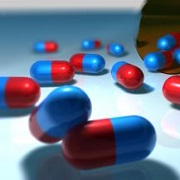Pharma Payments Influence Prescription Drug Spending
One payment of only $13 from pharmaceutical companies impacted prescription drug spending by adding three months to prescription days filled.
- Payments from pharmaceutical manufacturers may be more influential on physician prescribing habits than concerns over the rise in prescription drug spending, according to a recent study in the BMJ.

Researchers found that small payments from pharmaceutical companies significantly affected regional prescribing of marketed oral anticoagulants and non-insulin diabetes drugs. While the median value of payments was only $13, one additional payment in an average hospital referral region led to almost three months of additional prescription days filled over a 17-month period.
“[O]ur findings support long voiced concerns about the potential influence of even small payments to physicians by pharmaceutical companies, such as for food and beverages,” the authors wrote. “This influence on prescribing can potentially negatively affect patients through inappropriate prescribing, or more likely prescribing of more expensive branded drugs when cheaper, generic alternatives exist.”
The study used 2013 and 2014 data from the Open Payments program, a CMS-run healthcare transparency initiative that publishes physician payments from healthcare manufacturers, including research funds, charitable donations in lieu of payment, speaker fees, food and beverage payments, travel and lodging, and investments. Researchers used the information to track market trends with prescription drugs and determine market shares.
Using the payments information, the study showed that one payment per 1,000 Medicare Part D beneficiaries covered during 2014 increased the market share for marketed oral anticoagulants and non-insulin diabetes drugs by 0.32 percent and 0.12 percent, respectively.
In terms of prescribing habits, one additional payment in a hospital referral region caused 94 and 107 additional days filled of marketed drugs for oral anticoagulants and non-insulin diabetes medications, respectively.
Researchers also found that payments to specialists and physicians who provide expert guidance, or key opinion leadership providers, had greater impact on prescribing rates.
“Our findings also showed that though less frequent, certain payments, such as those for specialists, as well as payments generally intended for physicians who provide “key opinion leadership” through speaking to and educating the clinical community, have demonstrably larger effects on the prescribing of marketed drugs within hospital referral regions among all physicians,” the study stated.
While payments to specialists represented almost one-third of total number of payments associated with oral anticoagulants and 11 percent for non-insulin diabetes drugs, the sum value of specialist payments accounted for over half the total value of payments for both drugs.
The specialist payments led to a 0.71 percent increase in regional market share for oral anticoagulants and a 0.36 percent increase for non-insulin diabetes medications. The boost in market share caused more additional days filled for the marketed drugs compared to general physician payments with 112 more days for oral anticoagulants and 217 more days for non-insulin diabetes drugs.
Additionally, researchers reported that type of payment affected the market share for marketed prescriptions. Payments for speaker fees, honorariums, travel costs, consulting fees, and non-research grants were associated with larger regional prescribing rates compared to other payments, such as food and beverage gifts or educational materials.
For oral anticoagulants, speaker fees, consulting fees, honorariums, travel costs, and non-research grants increased the market share by 1.09 percent, compared to just 0.32 percent for other payments. The increase translated to 230 more days filled.
Speaker fees, honorariums, consulting fees, travel costs, and non-research grants boosted the market share for non-insulin diabetes medications by 0.53 percent, compared to only 0.12 percent for other payments, translating to 374 additional days filled.
“Physicians and policymakers should consider these findings and their implications for patient care when establishing personal, institutional, or legislative policy related to payments by manufacturers of pharmaceuticals to physicians,” the study concluded.
The study does not investigate the effect of payments on patient care, but it does point to some serious issues regarding a patient’s ability to pay and the effects of expensive brand name drugs on Medicare spending. Earlier this month, CMS announced that Medicare Part D spending, including beneficiary and third-party payment costs, increased by $17 billion in 2013 and 2014, which was the same timeframe as the BMJ study.
Brand name drugs accounted for the highest total costs, CMS stated. Medicare, third-parties, and beneficiaries paid more than $1 billion on each of the top ten prescriptions with the highest total costs between 2013 and 2014.
With prescription drug spending substantially increasing, providers may be able to help patients and Medicare save money by opting for generic drug choices. Many of the costliest drugs according to CMS data, including Nexium, Crestor, and Abilify, have generic alternatives.
By prescribing more affordable medications, providers may be helping patients to afford and adhere to care plans, which, in turn, could boost patient outcomes and ensure that patients pay more of their financial responsibility.
Dig Deeper:
• Key Ways to Boost Collection of Patient Financial Responsibility
• Would Proposed Value-Based Reimbursements Reduce Drug Costs?
